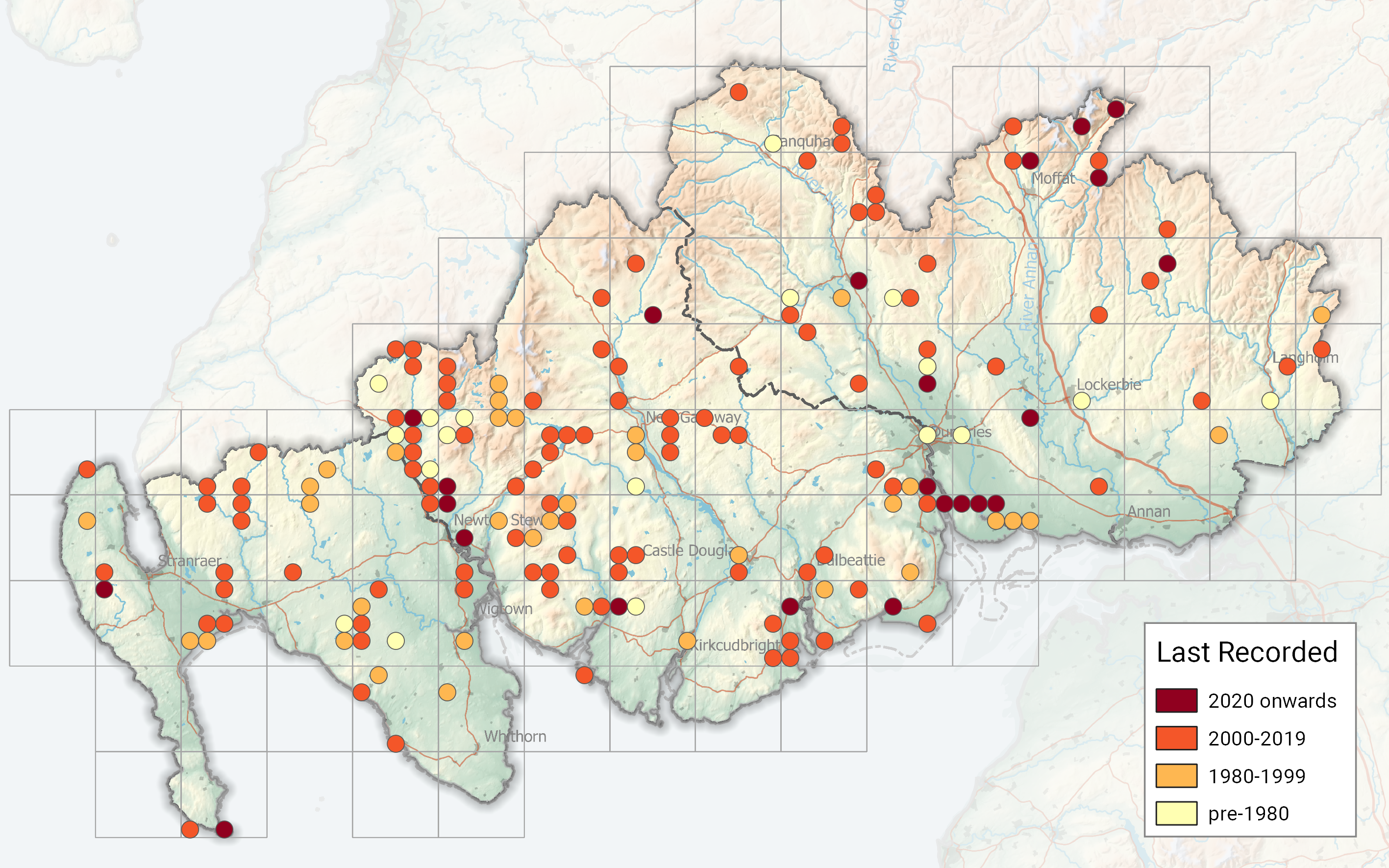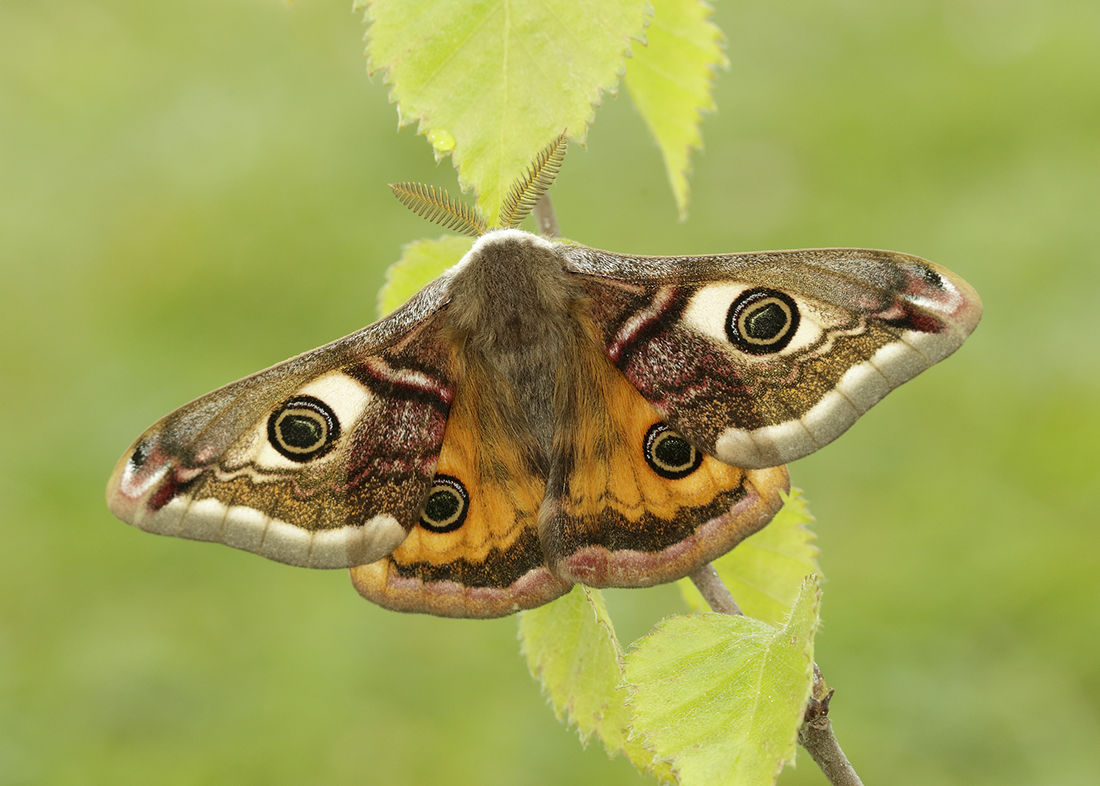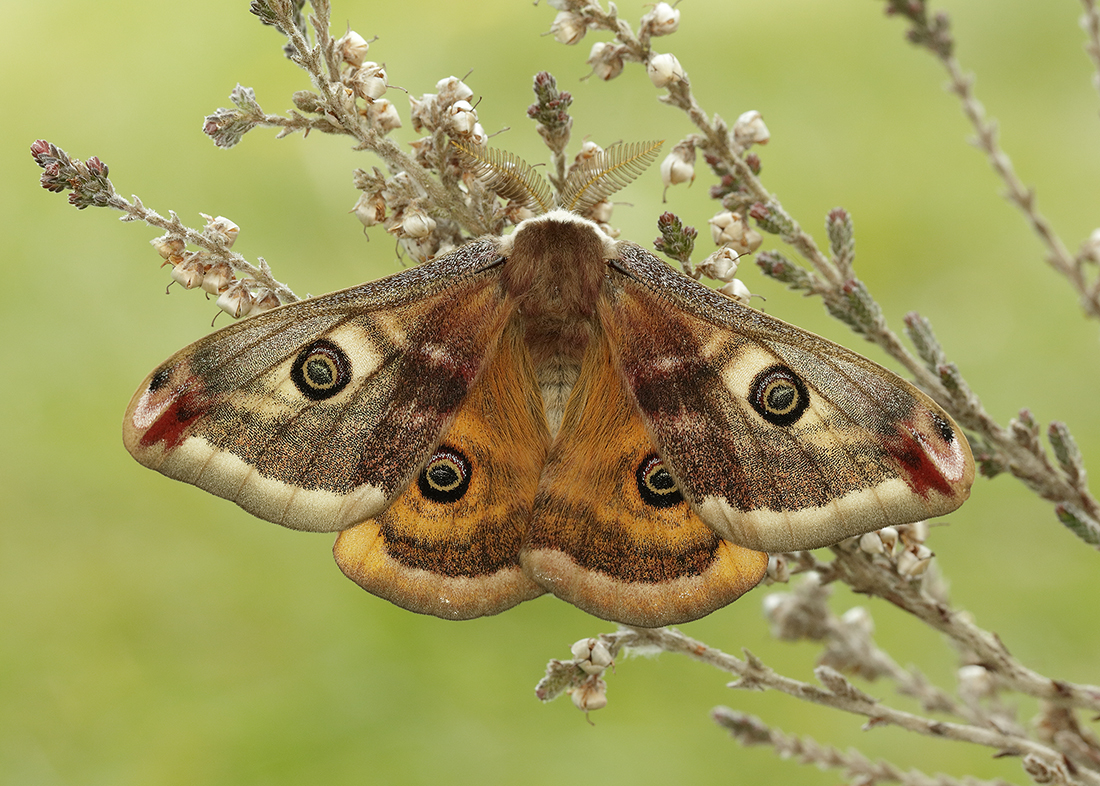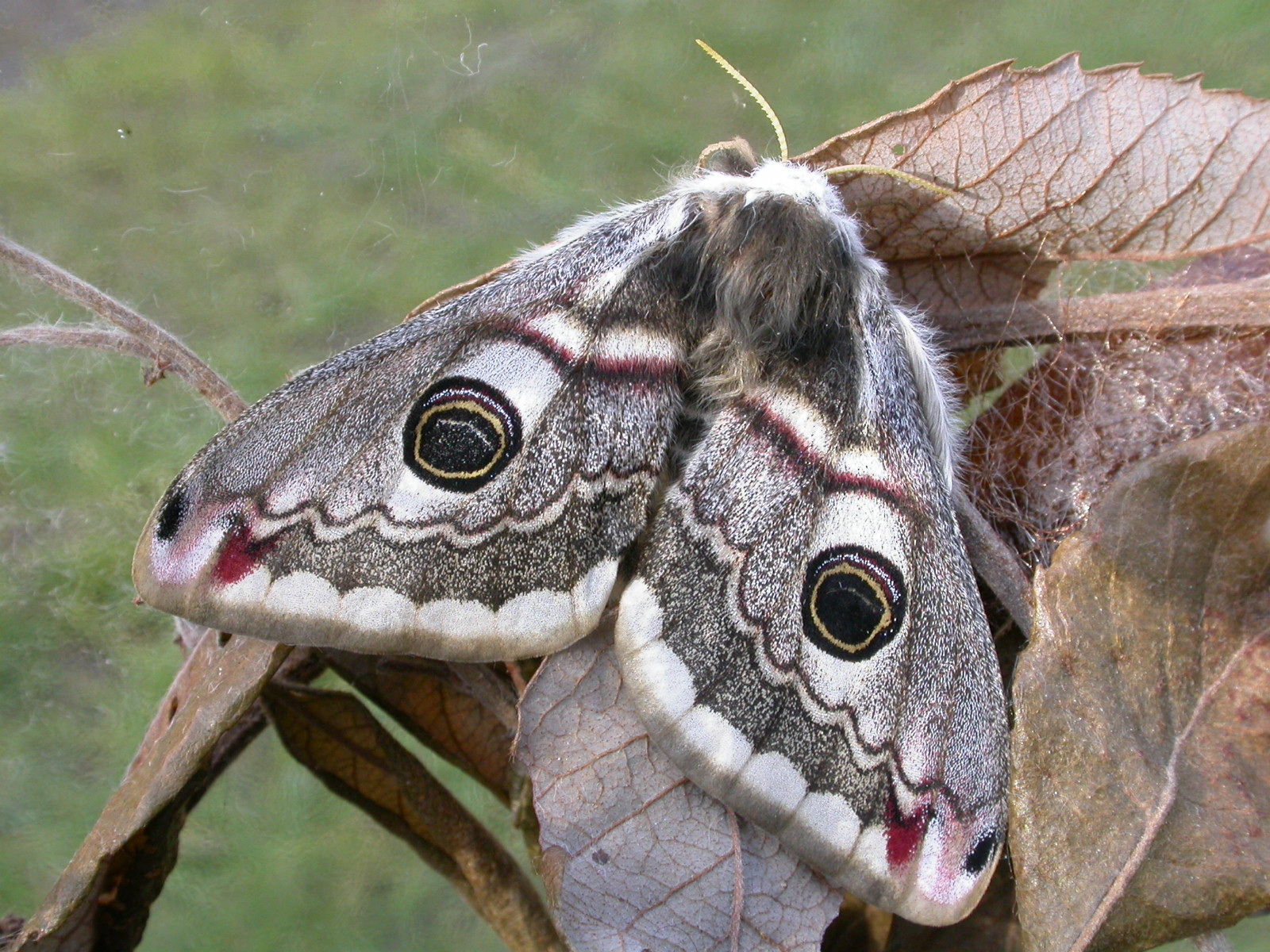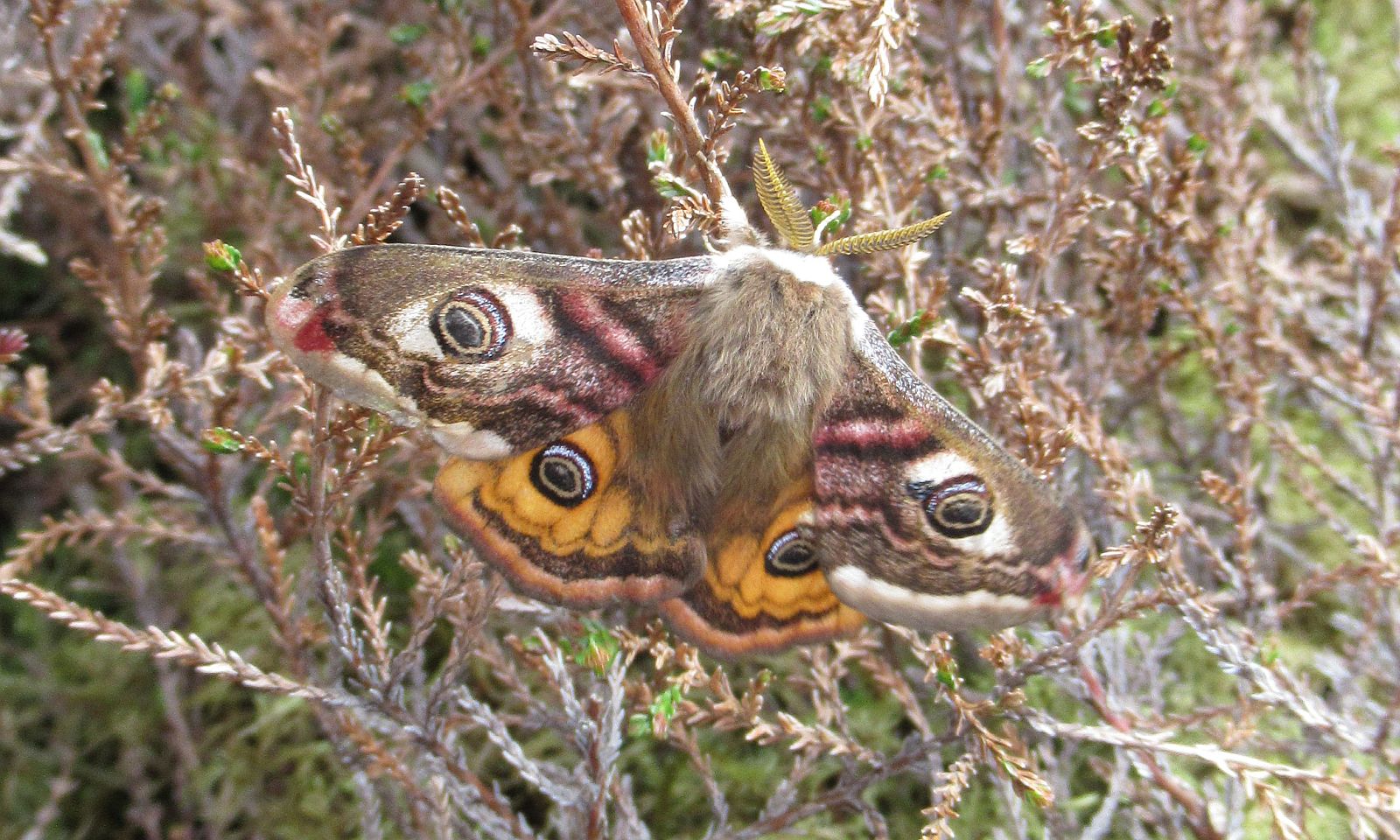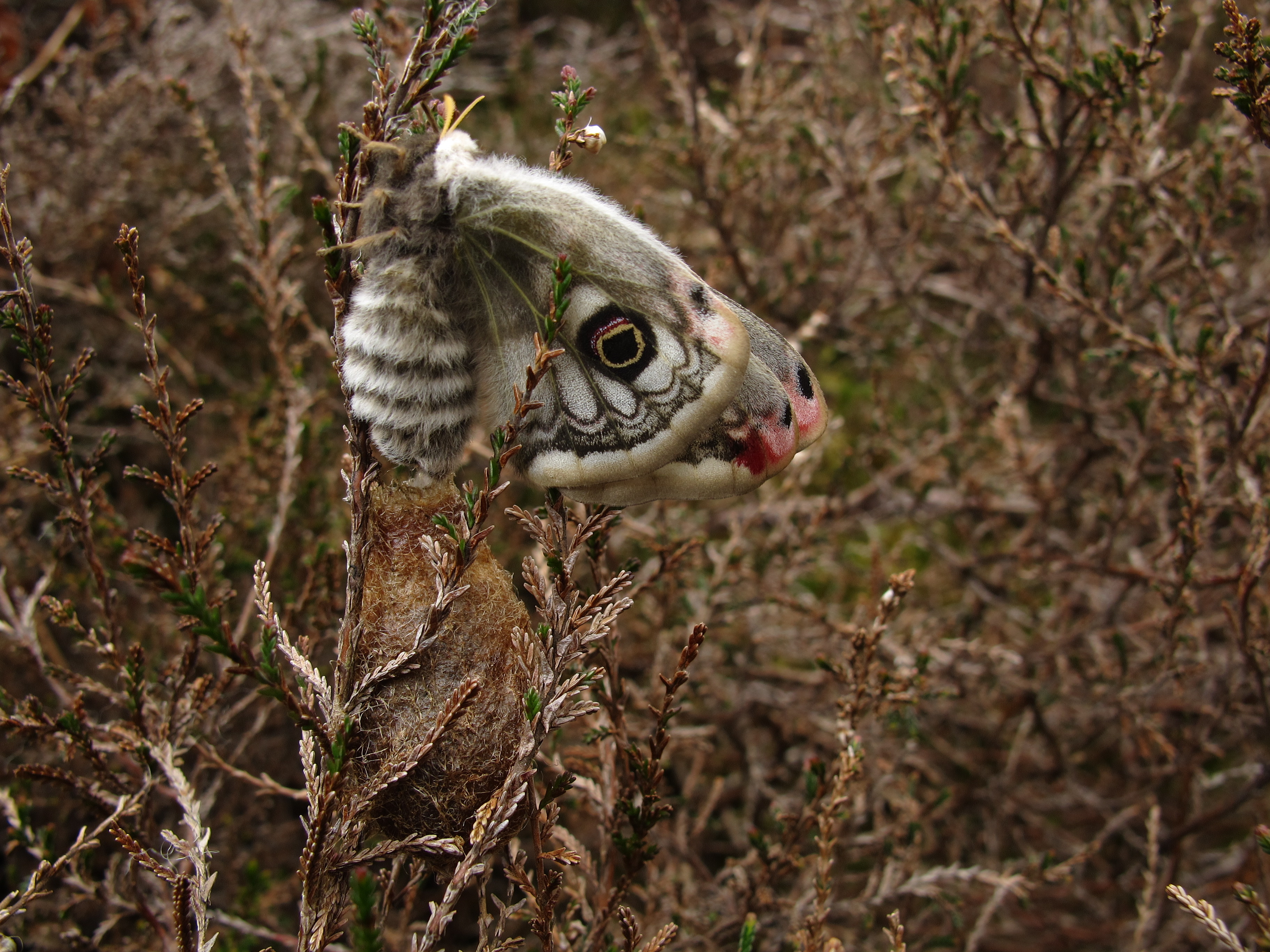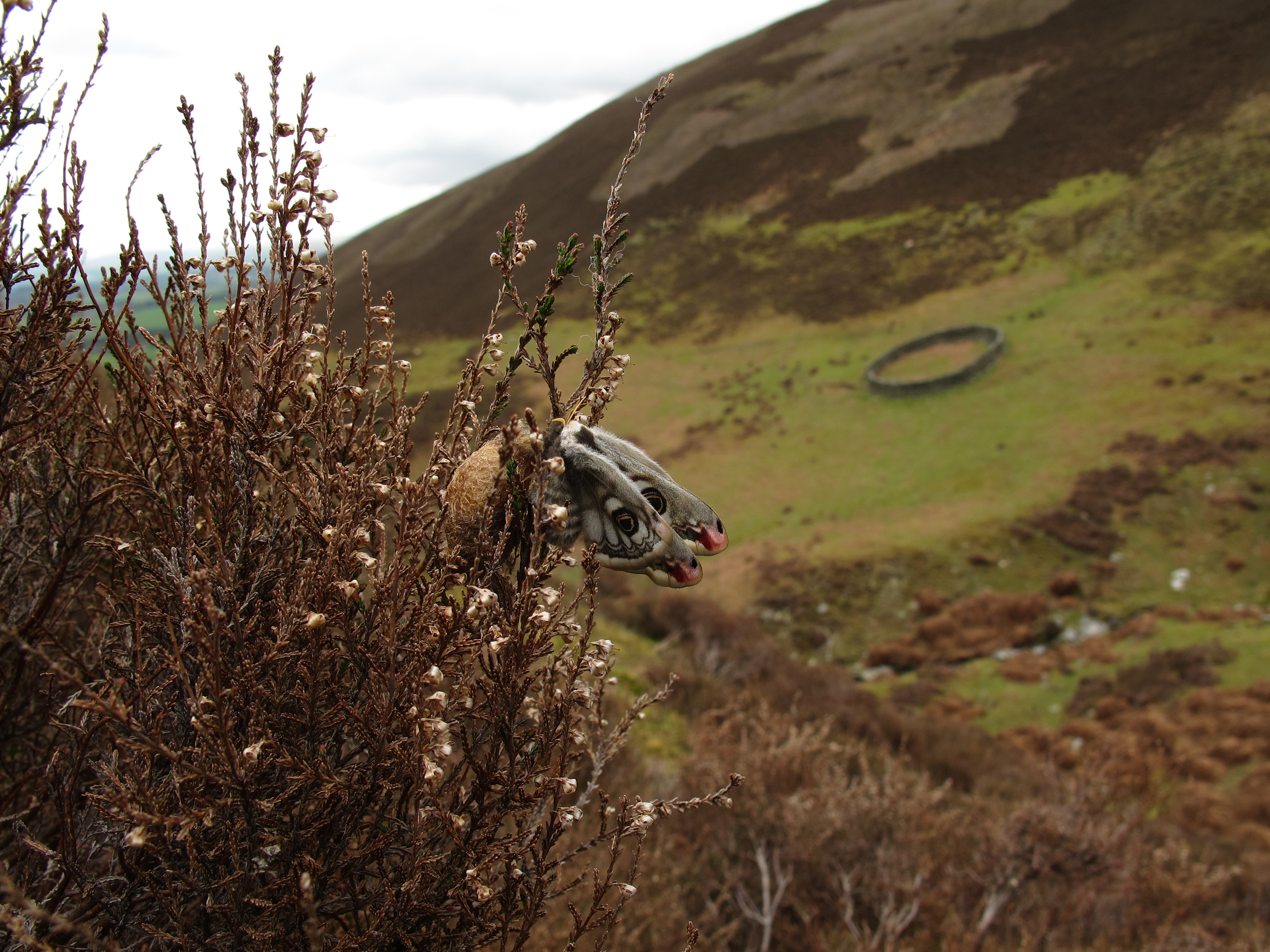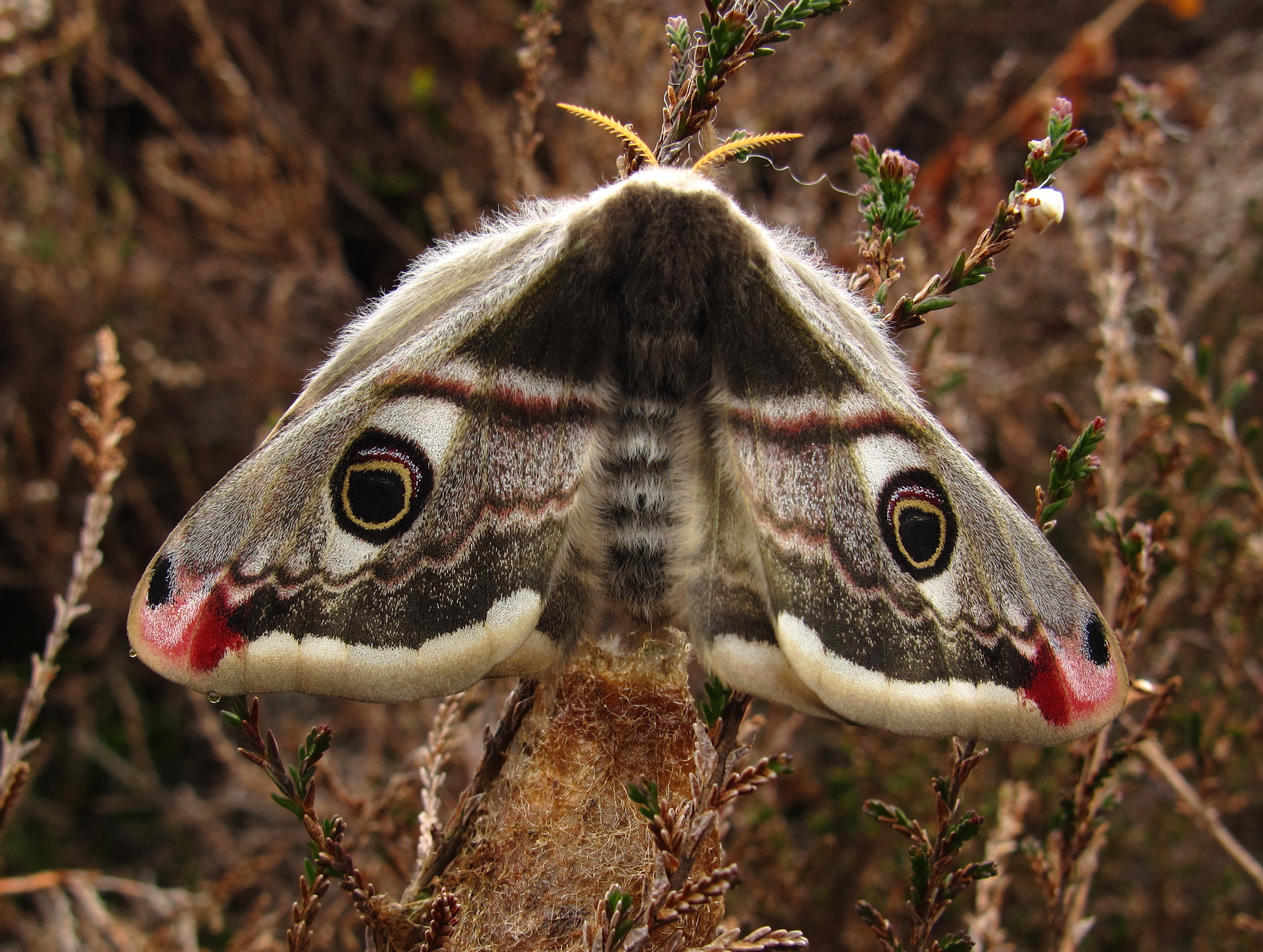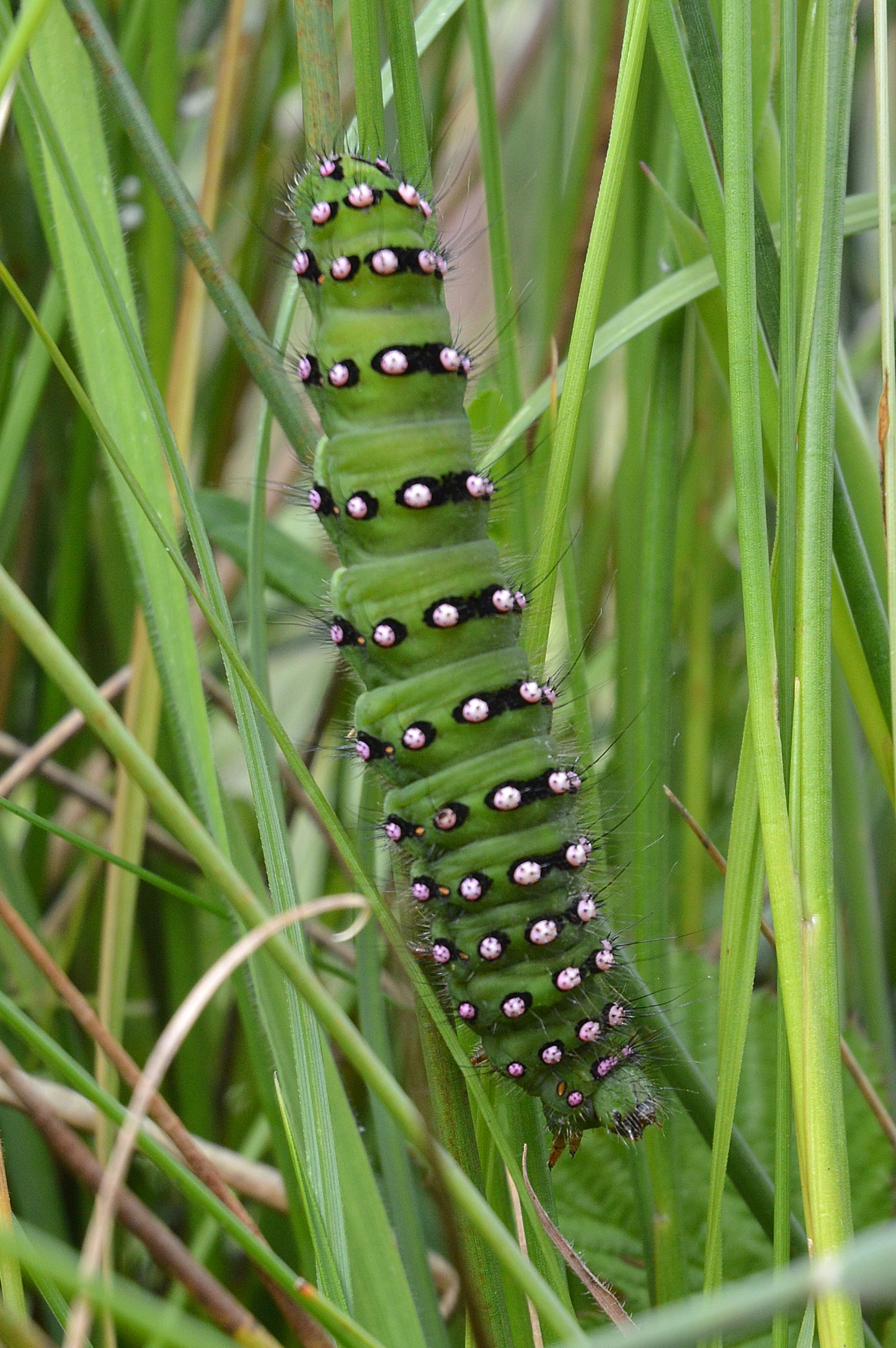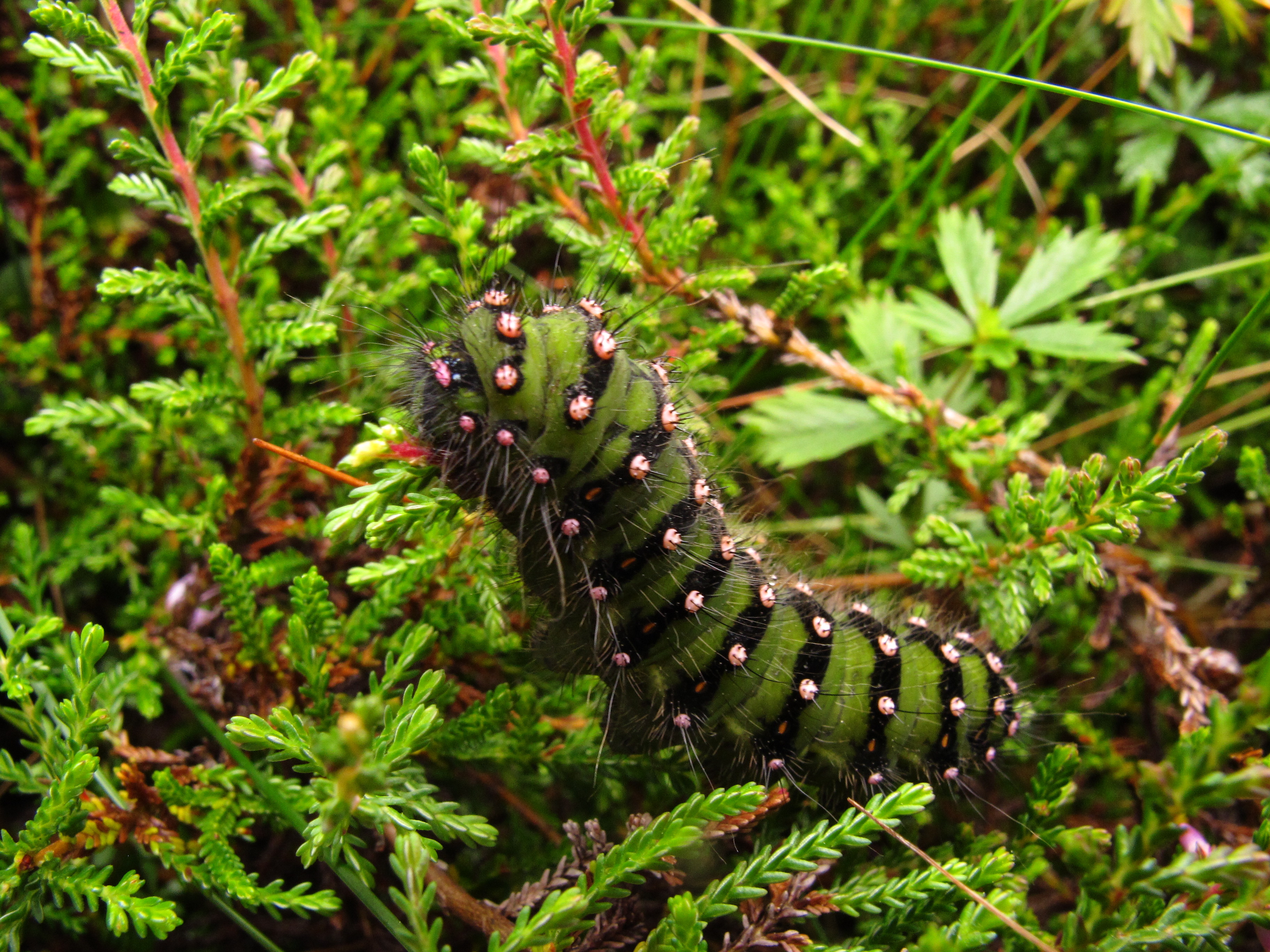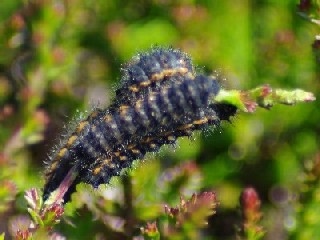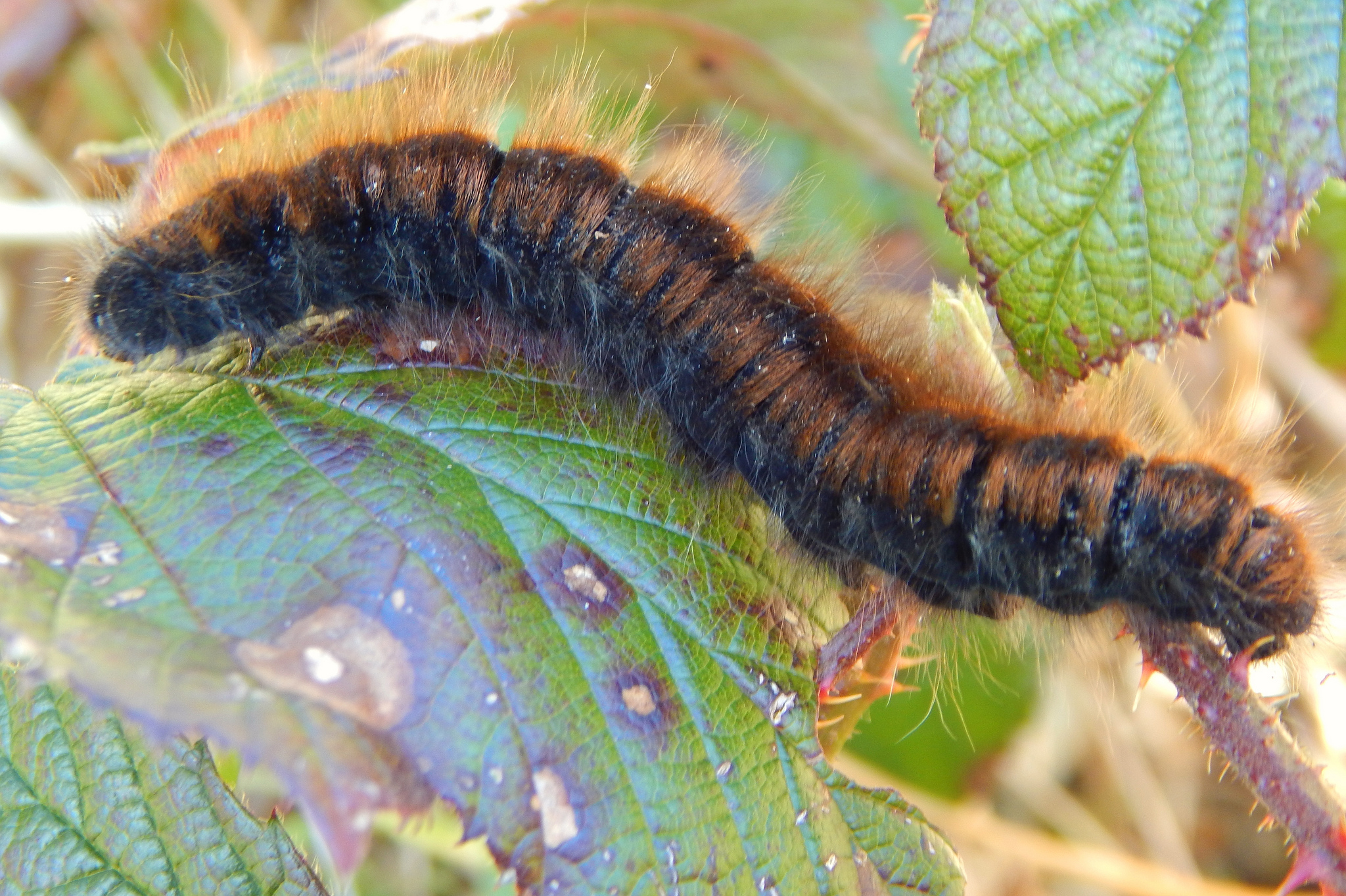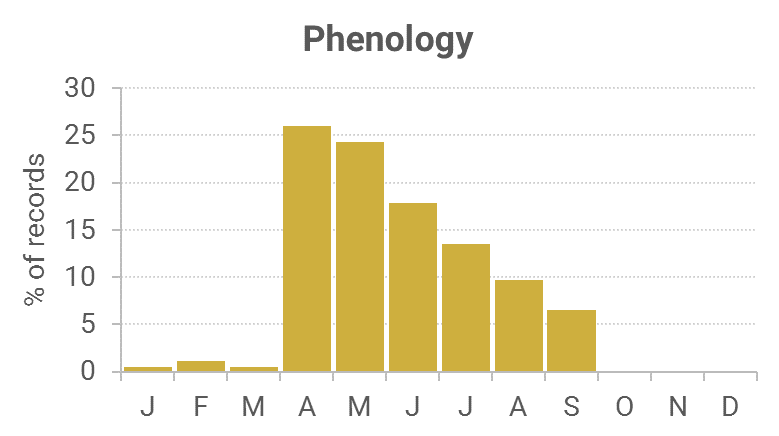See also Moth of the Week (30/04/2019)
Identification
Unmistakable. Smaller male with feathered antennae easily distinguished from larger female and can be recorded.
Recording Method
Female nocturnal and is attracted to light. Male active by day, often with rapid erratic flight. Male is readily attracted to pheromone lure, sometimes in numbers, as well as to assembled females.
Life cycle
One generation. Overwinters as a pupa attached to a plant stem at ground level. Eggs are laid in batches, attached to the foodplant. Larvae are present mid-June to early September, resting in groups in exposed situations.
Larval foodplants
Larvae feed on heather and other woody plants such as Hawthorn, Blackthorn, sallows and birches. Also Meadowsweet and Bramble.
Habitat
Mostly moorland, heathland and bogs.
History
Lennon (1860) stated he had bred eight on, presumably from larvae he had collected from around Dumfries while out rambling. By 1863, Lennon found it was generally distributed. W. Douglas Robinson (1870-71) had found one larva during August at Cloke Moss (VC73). Gordon (1913) also said it was common and generally distributed on the moors, with males on the wing from 3 pm to 4 pm. On one patch of heather he counted 19 nearly full-fed larvae near Corsemalzie on 18th August 1910. Earliest date was 11th April 1899.
MOGBI (1992) recorded it as widespread across the region, and that is still the case during the first ten years of the 21st century. Our larvae records are from mid-June to early September with a pupa record for late April.

